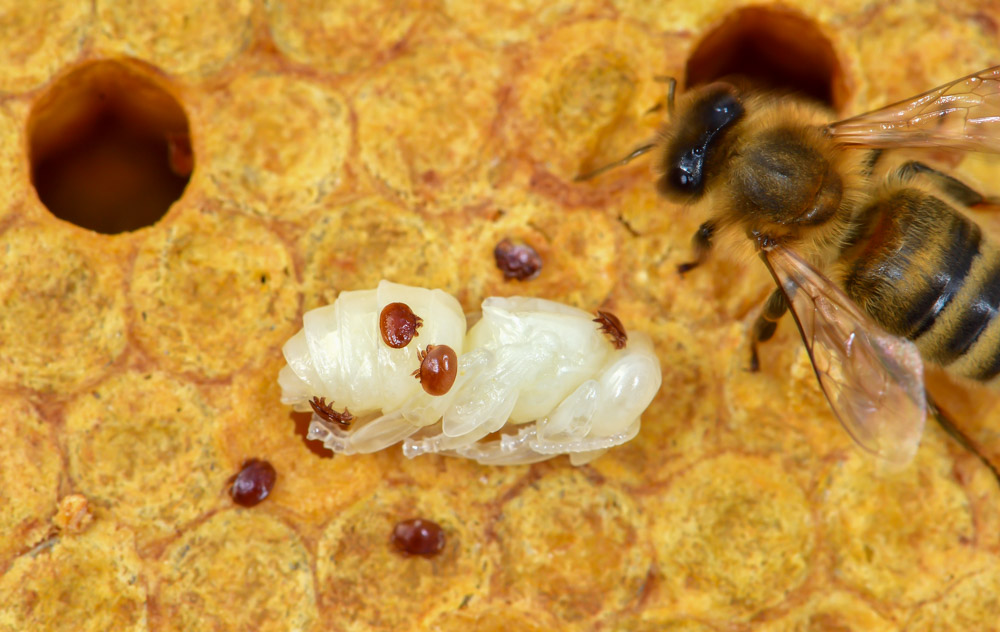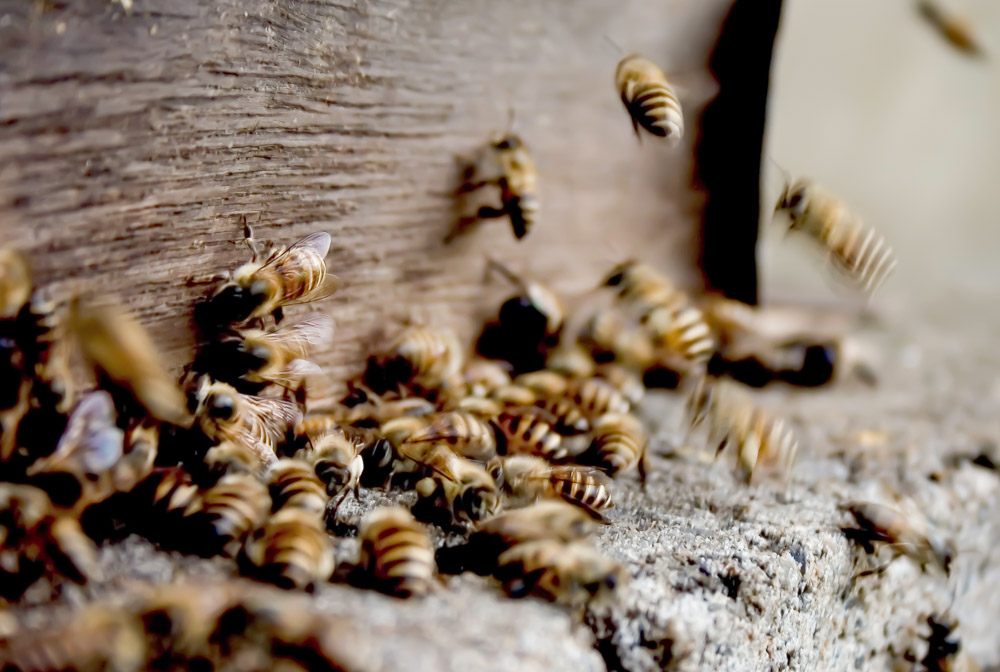If you are a beekeeper in California, you know that almond pollination is one of the most important and lucrative services you can provide to farmers. Almonds are the largest pollination-dependent crop in the world, and California produces about 80% of the global supply. Every year, from February to March, millions of honeybees are transported to California’s Central Valley to pollinate over 860,000 acres of almond orchards.
But almond pollination is not without its challenges. Bees face threats such as parasites, diseases, lack of forage, pesticide exposure, climate change, and competition with wild bees. These factors can affect the health and productivity of your colonies, as well as your bottom line.
Common bee safety threats
Here are some of the most common threats and bee safety improvement suggestions.
Varroa Mites
One of the biggest enemies of honeybees is the Varroa mite. It is a tiny parasite that feeds on the blood of adult bees and larvae. Varroa mites can weaken the immune system of bees, transmit viruses, reduce lifespan, and cause deformities. Varroa mites are especially problematic during the almond pollination season. That’s because they can spread easily among the densely packed hives in the orchards.
To prevent Varroa infestations, you should monitor your mite levels regularly and apply treatments as needed. There are various methods to control Varroa mites, such as chemical miticides, organic acids, essential oils, heat treatment, drone brood removal, and screened bottom boards. You should choose the method that suits your situation and follow the instructions carefully. You should also avoid reusing old combs and equipment that may harbor mites or residues.
Lack of Forage
Another challenge that beekeepers face during the almond pollination season is the lack of natural forage for their bees. Almonds are the first crop to bloom in the spring, and they provide a rich source of pollen and nectar for bees. However, almonds only bloom for a few weeks, and after that, there is not much else for bees to feed on. This can lead to nutritional stress and starvation for your colonies.
To prevent this problem, you should supplement your bees with artificial feed before, during, and after the almond pollination season. You can use sugar syrup or high-fructose corn syrup to provide carbohydrates, and pollen patties or protein supplements to provide protein. Look for locations that have diverse floral resources nearby, such as clover fields or wildflowers. Plant bee-friendly plants in your own yard or apiary to provide extra forage for your bees.
Pesticide Exposure
A third bee safety challenge that beekeepers face during the almond pollination season is the exposure to pesticides. Almond growers use various pesticides to protect their crops from pests and diseases, but these chemicals can also harm bees. Some pesticides can kill bees directly, while others can impair their behavior, learning, memory, reproduction, or immunity. Pesticide exposure can also interact with other stressors, such as Varroa mites or diseases, and increase their negative effects.
To reduce pesticide exposure, you should communicate with almond growers and agree on a pest management plan that minimizes the risk to bees. Ask the farmer to avoid spraying pesticides when bees are active or when flowers are open. Also ask farmers to use bee-friendly pesticides that have low toxicity or short residual time. Protect your hives from spray drift by placing them away from sprayed areas or covering them with tarps or netting.
Climate Change
A fourth bee safety challenge that beekeepers face during the almond pollination season is the impact of climate change. Climate change can affect the timing and duration of almond bloom, as well as the availability and quality of forage for bees. Climate change can also cause extreme weather events. Events such as droughts, floods, heat waves, or cold snaps, which can stress or kill bees.
To cope with climate change, you should monitor the weather conditions and adjust your management practices accordingly. Diversify your income sources by providing pollination services to other crops or selling honey or other bee products. You should also support research and advocacy efforts that aim to mitigate climate change and its effects on bees and agriculture.
Competition with Wild Bees
A fifth challenge that beekeepers face during the almond pollination season is the competition with wild bees. Wild bees are native or naturalized bees that live in natural habitats or urban areas. They can also pollinate almonds and other crops, sometimes more efficiently than honeybees. However, wild bees are also threatened by habitat loss, pesticides, diseases, climate change, and invasive species. Moreover, the introduction of millions of honeybees to the almond orchards can harm wild bees. That happens by competing for food and resources, spreading diseases, or hybridizing with them.
To reduce the impact of honeybees on wild bees, you should respect the natural balance of the ecosystem and avoid overstocking your hives in the orchards. You should also support the conservation and restoration of wild bee habitats, such as woodlands, grasslands, or hedgerows. You should also avoid introducing exotic or invasive bee species, such as Africanized honeybees or Asian giant hornets, which can displace or endanger wild bees.
More Useful Blog Posts
AgNote is practical farm management software that can help almond growers optimize their operations and increase their profits. Here are few more useful blog posts about permanent crop management:
- Track chill hours using different models, which are important for almond production and bloom timing
- Almond Tree Pollination: A Sweet Deal for Bees and Growers
- Spring Insecticide Spray Guide for Almond Orchard Owners
If you want to try AgNote, you can register today for a free seven-day trial!
Conclusion
Almond pollination is a vital service that beekeepers provide to farmers and consumers. However, it also comes with many bee safety challenges that can affect the health and profitability of your colonies. By following some of the suggestions and best practices we discussed in this blog post, you can overcome these challenges and protect your pollinator bees. You can also contribute to the sustainability of the almond industry and the well-being of the environment.


